Community Pharmacists Face Barriers Providing Gender-Specific Guidance
Using a web-based survey of people in Japan, researchers determined the perceived barriers pharmacists face when counseling patients with gender-specific diseases.
Community pharmacists reported significant barriers in providing medication counseling for diseases specific to certain genders, according to a study published in Exploratory Research in Clinical and Social Pharmacy.1 Researchers claim future studies will focus on ways pharmacists can overcome these barriers and further understand their own assumptions toward gender-specific diseases.
“Pharmacists are expected to provide equitable care to all patients, regardless of race, age, gender, or social background, thereby contributing to the fair delivery of health care services,” wrote authors of the study. “However, despite these expectations, there may be situations wherein appropriate medication counseling is not provided. One such scenario is the potential communication gap that arises when there is a gender mismatch between pharmacists and patients.”
Gender norm challenges within health care have been common. Some challenges have impacted health care providers directly, such as the evidence showing that women providers have been paid less than their male counterparts despite women performing over 75% of health care jobs in the US.2
Other challenges have been noticeable among patient preferences for the care they provide. A previous study published in Healthcare (Basel) showed that female health care providers are preferred over men because of their empathy, intimate care, and receptionist roles. Men, on the other hand, were more often preferred by patients because of their surgery skills, professionalism, and information technology roles.3
READ MORE:
Despite preconceived gender norms within health care, there is true curiosity on how patient-provider concordance or discordance impacts patient outcomes.
“Studies conducted in the United States report that female patients often prefer female primary care physicians; however, this preference does not necessarily result in higher patient satisfaction,” continued authors of the study.1 “In New Zealand, female doctor-patient pairs tended to report higher levels of trust in doctors, whereas male doctor-patient pairs were more likely to perceive diagnostic uncertainty, suggesting a need to acknowledge bias against female patients.”
While previous data may not be generalized to encapsulate all gender norms that span global societies, these studies provide enough evidence to dive deeper into perceptions of gender norms among patients and providers alike. In this study, researchers applied the aforementioned issues and challenges within the work of pharmacists and their medication counseling capabilities due to a lack of previous evidence.
“Pharmacists may either be hesitant to provide medication guidance for gender-specific diseases or may lack sufficient knowledge of gender-specific diseases or drug treatments, hampering optimal medication guidance,” they wrote.1 “This study aimed to determine whether gender-specific diseases contribute to barriers in medication guidance and uncertainty and to evaluate whether pharmacist-patient gender differences affect these barriers.”
Researchers conducted a web-based survey of pharmacists from 5 different pharmacy groups in Japan. They were asked questions on their hesitancy and uncertainty in knowledge for 10 gender-specific and 3 non-gender-specific diseases. Researchers were also sure to include scenarios of male pharmacists and male patients, female pharmacists and female patients, male pharmacists and female patients, and female pharmacists and male patients.
Following survey distribution, the final analysis included 696 responses for pharmacists (61.5% women; 41.2% between 30 and 39 years old) seeing female patients and 583 responses of pharmacists (56.9% women; 41.3% between 30 and 39 years old) that saw male patients.
The female-specific diseases explored were cystitis, candidal vulvovaginitis, dysmenorrhea treated by nonsteroidal anti-inflammatory drugs, dysmenorrhea treated by oral contraceptives, and menopausal disorders. Male-specific diseases included prostatitis, condyloma acuminatum, androgenetic alopecia, benign prostatic hyperplasia, and erectile dysfunction. The non-gender-specific diseases included as the control were gastroenteritis, allergic rhinitis, and asthma.
“By plotting the levels of hesitancy toward medication guidance and knowledge uncertainty for treating each disease, gender-specific diseases were found to be associated with greater barriers than non-gender-specific diseases,” continued the authors.1 “Furthermore, the results clarified that some diseases showed higher barriers under gender discordance, whereas others exhibited higher barriers regardless of gender concordance.”
Overall, despite pharmacists showing more or less understanding of some diseases when compared with others, the main factor leading to hesitancy or a lack of knowledge was discordance in genders between patients and providers. And while discordance wasn’t the main factor in all 13 diseases explored, it was the deciding factor that led to hesitancy or a lack of knowledge among all female-specific diseases.
Study data show that there is a persistent need to improve patient-provider interactions while also improving pharmacists’ knowledge of gender-specific medications and the barriers that impede counseling patients of an opposite gender. Future research will focus on better understanding the factors and attitudes that allow providers to overcome the aforementioned barriers.
“This study revealed that community pharmacists may perceive barriers to providing medication guidance for certain gender-specific diseases,” concluded the authors.1 “These barriers were observed in gender-discordant pharmacist-patient interactions and some gender-concordant cases. Moving forward, our research team plans to conduct interview-based studies with community pharmacists to identify specific factors and attitudes that help overcome barriers to medication counseling for gender-specific conditions.”
READ MORE:
Pharmacy practice is always changing. Stay ahead of the curve: Sign up for our
References
1. Nomi M, Kumaki R, Takehira R, et al. Does pharmacist-patient gender discordance influence medication guidance for gender-specific diseases? Explor Res Clin Soc Pharm. 2025;20:100642. https://doi.org/10.1016/j.rcsop.2025.100642
2. Dill JS, Frogner BK. The gender wage gap among health care workers across educational and occupational groups. Health Aff Sch. 2023 Dec 27;2(1):qxad090. doi: 10.1093/haschl/qxad090.
3. Kitole FA, Ali Z, Song J, et al. Exploring the gender preferences for healthcare providers and their influence on patient satisfaction. Healthcare (Basel). 2025 May 5;13(9):1063. doi: 10.3390/healthcare13091063.
Newsletter
Pharmacy practice is always changing. Stay ahead of the curve with the Drug Topics newsletter and get the latest drug information, industry trends, and patient care tips.













































































































































